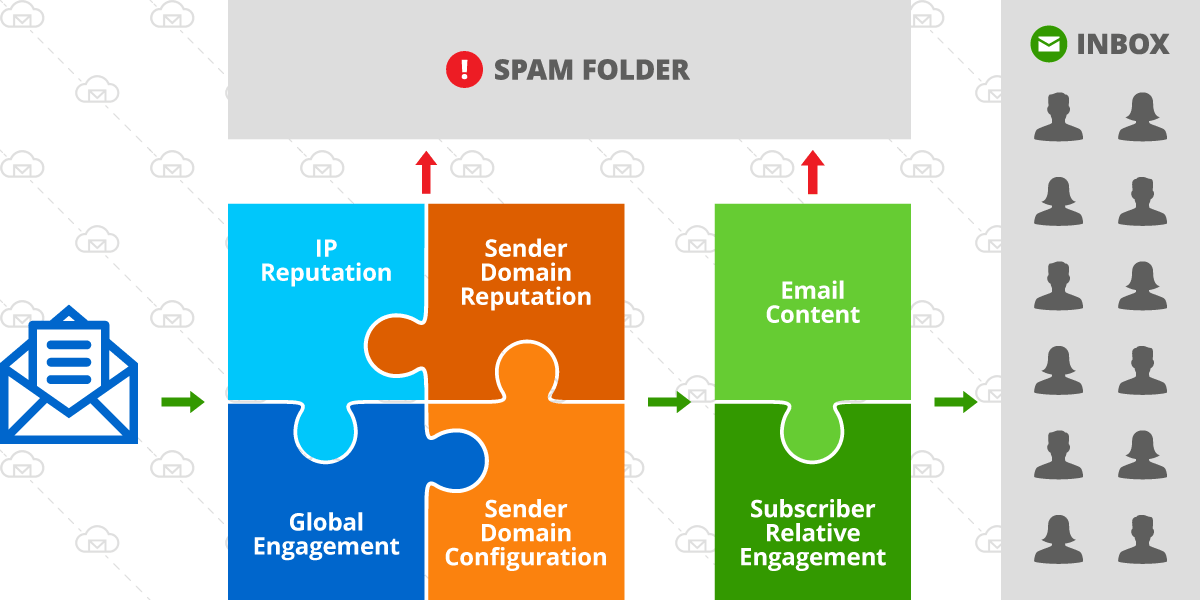What is email bounce rate?
Email Bounce Rate is the percentage of emails that have not successfully reached recipients. A high bounce rate can have a negative impact on sender reputation and inbox placement. There are two types of bounces – hard and soft.
A hard bounce is an email that couldn’t be delivered for permanent reasons – email address might not exist because of a typo or the email account was deleted or suspended for inactivity. A soft bounce is an email that couldn’t be delivered because of temporary reasons. Most common reasons for soft bounces are inbox full, message or attachment too large, mailbox provider service is down.
Most providers, including BigMailer, automatically tag hard bounces so future emails can’t be sent to those addresses, thus reducing your bounce rate on ongoing basis. Keep in mind that those emails are typically not removed from your lists and just labeled with a status for appropriate action, so the bounced emails may be in exports for moving a list to a new provider.
What is a good email bounce rate?
An acceptable bounce rate is less than 2%. Anything above a 2% bounce rate for your email campaigns requires your attention. A bounce rate over 5% can cause issues with deliverability and inbox placement. A bounce rate over 10% can result in your account suspension on most email marketing platforms. The bigger the list size, the more sensitive a mailbox provider is to your bounce rate, because the % is more statistically significant on larger lists (over 10k).
All email lists decay naturally for a variety of reasons. The average natural decay rate for email lists is 2% for B2C lists and 3% for B2B lists (due to job changes). Typically, soft bounces don’t have a negative impact on your sender reputation and inbox placement.
Why do emails bounce at high rate?
Emails bounce due to a variety of reasons, most common reasons are:
- The email list is old and hasn’t been engaged in a long time. An email list that is 12 months old can bounce at a rate of 20-40%, which is too high.
- The email list was purchased or scraped from the web and contains a lot of old and invalid email addresses. Sending cold emails may be against terms of use for your email marketing service provider, it is for most major email marketing platforms, so make sure to use the right tools for your cold outreach campaigns to avoid account suspensions.
How do I stop emails from being bounced?
If you haven’t engaged with your list in more than 1-2 months it is best to validate it with an email verification provider and remove invalid addresses before sending bulk/marketing campaigns.
If you want to avoid bot signups you can add RECAPTCHA to your webforms.
If you are seeing a high soft bounce rate for a particular mailbox provider the 2 likely reasons are:
- Inbox full due to storage limits – this is especially true for icloud.com and me.com domains and is more typical on older lists
- Mailbox provider service is down, with the exception of Gmail outage in early 2021 resulting in erroneous hard bounces
Final Thoughts
To protect your sender reputation and improve your delivery and inbox rates check out our email deliverability best practices guide.

